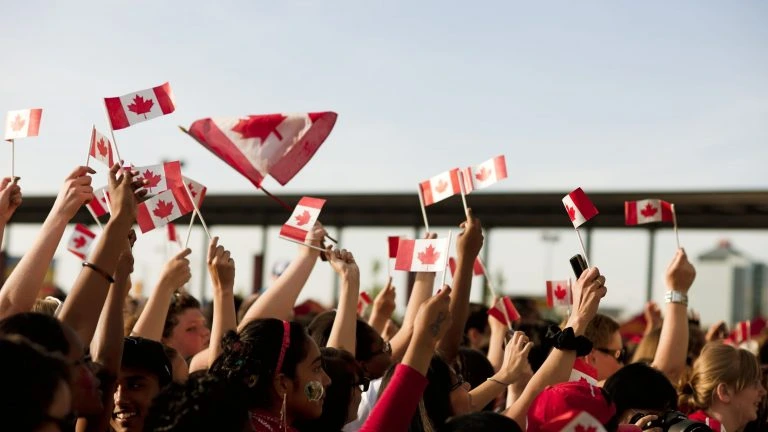Canada is famous for its pristine landscape (especially its vast mountain ranges), rich history and diverse blend of people and cultures.
It’s the second largest country in the world, and extends from the U.S. in the south all the way to the Arctic Circle in the north.
Canada is made up of ten provinces and three territories; the capital city is Ottawa, but you might also be familiar with other major cities like Vancouver, Toronto and the French-speaking Québec and Montréal.
Canada is bilingual, with English and French being the two official languages, but most people speak English at home. You might hear some common Canadian slang such as loonie (a dollar coin), chinook (a warm wind that comes over the mountain in mid-winter) and Hog Town (nickname for Toronto).
Language
Canada is a bilingual country where French and English are both official languages at the federal level. French is the language of the majority in the province of Quebec, and is a significant language in provinces such as New Brunswick and Ontario. Other provinces primarily use English. New Brunswick is only province to appoint both English and French as official languages at the provincial level. A number of Canadians are bilingual, with some understanding of both French and English.
Indigenous culture
There are three different groups of Indigenous people in Canada – First Nations, Inuit and Métis.
The First Nations people settled in Canada over 15,000 years ago and developed many different communities, each with their own customs, culture and character. Today there are 634 recognised First Nations governments or groups across Canada, mostly in the provinces of British Columbia and Ontario.
The Métis are descendants of unions between First Nations peoples and Europeans, mainly French traders. While the Métis mainly speak English today, you may hear some Michif, or Métis French as people increasingly take more interest in traditional languages and culture.
The Inuit are the descendants the Thule culture and live in the Arctic regions of Greenland, Canada and Alaska.
Population
Canada has a population of about 36.7 million. The majority of Canadians are of European descent from early French and British colonists, as well as later immigrants from eastern and southern Europe.
The second half of the 20th century saw a large increase in the number of immigrants from Asia, the Caribbean, and Africa. There are currently more than 260 different ethnic origins reported across Canada. It is also home to a large aboriginal population made up of the First Nations, Inuit, and Métis.
Religion
Just like many other developed countries, irreligion is growing in popularity in Canada. A majority of Canadians claim to be religiously affiliated but few observe religion. The country remains Christian dominated state but the number of people claiming no affiliation to religion has been on the rise since the 1980s. Nevertheless, Canada is tolerant to different faiths and beliefs as the country has no official religion.
About 67% of the population identifies with Christianity, with Roman Catholicism and Protestant Christianity being the major religions. The major protestant denominations are United Church of Canada, Baptist, Anglican Church of Canada, and Presbyterian. Minority religions include Islam, Buddhism, Hinduism, Sikhism, and Judaism.














